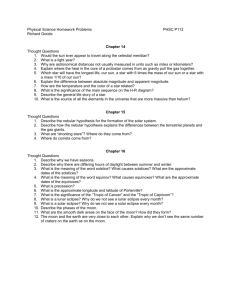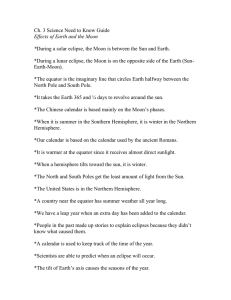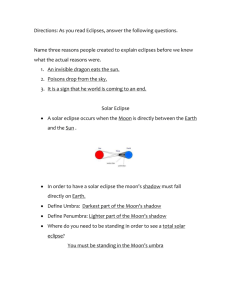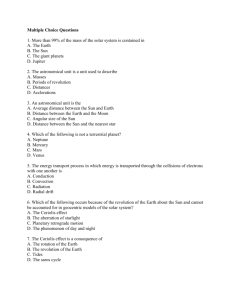hw1
advertisement
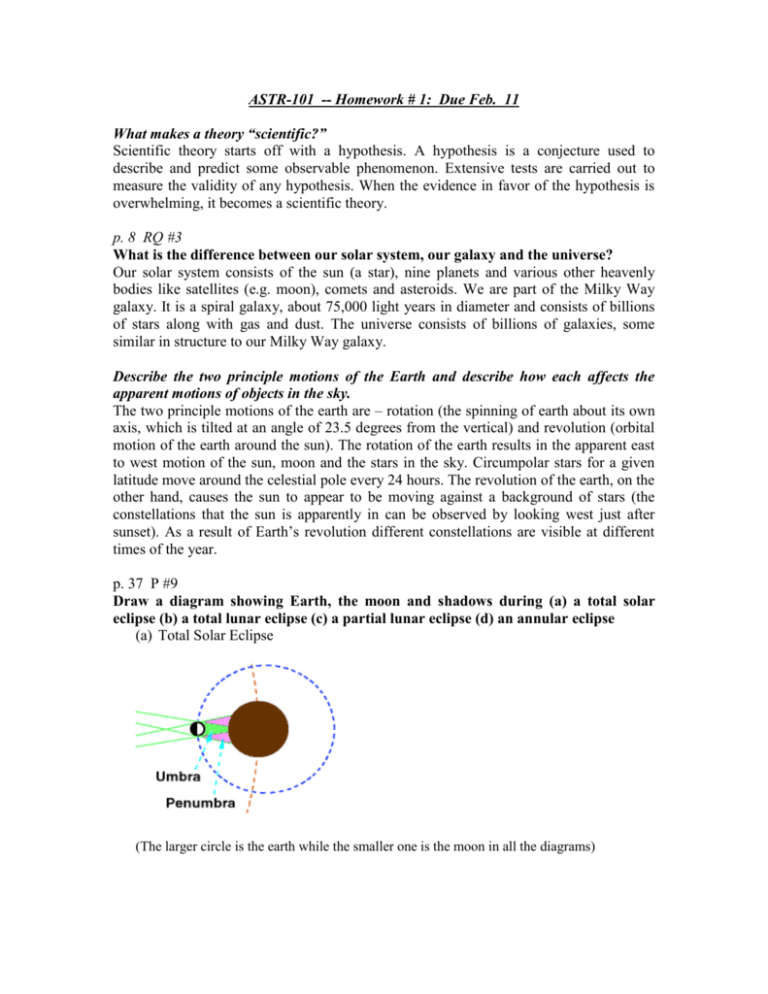
ASTR-101 -- Homework # 1: Due Feb. 11 What makes a theory “scientific?” Scientific theory starts off with a hypothesis. A hypothesis is a conjecture used to describe and predict some observable phenomenon. Extensive tests are carried out to measure the validity of any hypothesis. When the evidence in favor of the hypothesis is overwhelming, it becomes a scientific theory. p. 8 RQ #3 What is the difference between our solar system, our galaxy and the universe? Our solar system consists of the sun (a star), nine planets and various other heavenly bodies like satellites (e.g. moon), comets and asteroids. We are part of the Milky Way galaxy. It is a spiral galaxy, about 75,000 light years in diameter and consists of billions of stars along with gas and dust. The universe consists of billions of galaxies, some similar in structure to our Milky Way galaxy. Describe the two principle motions of the Earth and describe how each affects the apparent motions of objects in the sky. The two principle motions of the earth are – rotation (the spinning of earth about its own axis, which is tilted at an angle of 23.5 degrees from the vertical) and revolution (orbital motion of the earth around the sun). The rotation of the earth results in the apparent east to west motion of the sun, moon and the stars in the sky. Circumpolar stars for a given latitude move around the celestial pole every 24 hours. The revolution of the earth, on the other hand, causes the sun to appear to be moving against a background of stars (the constellations that the sun is apparently in can be observed by looking west just after sunset). As a result of Earth’s revolution different constellations are visible at different times of the year. p. 37 P #9 Draw a diagram showing Earth, the moon and shadows during (a) a total solar eclipse (b) a total lunar eclipse (c) a partial lunar eclipse (d) an annular eclipse (a) Total Solar Eclipse (The larger circle is the earth while the smaller one is the moon in all the diagrams) (b) Total Lunar Eclipse (c) Partial lunar eclipse (Diagram same as (b), but moon is on line separating umbra and penumbra. Cross-section of moons shadow is shown below: light gray is the penumbra; darker gray is the umbra.) (d) Annular ecplipse (Diagrams reference: www.hermit.org) Express the average distance to the Moon in terms of Earth diameters. (In other words, how many Earth’s placed side-by-side would it take to reach the Moon?) Useful information can be found on pages 128 and 134. Given data: Earth’s diameter = 12,756 km (pg 128) Average distance from the earth = 384,400 km (Pg 134) Thus, number of earth’s to be placed side-by-side to reach the moon = distance to moon / earth’s diameter = 384,400 km / 12,756 km = 30.135 earth diameters
